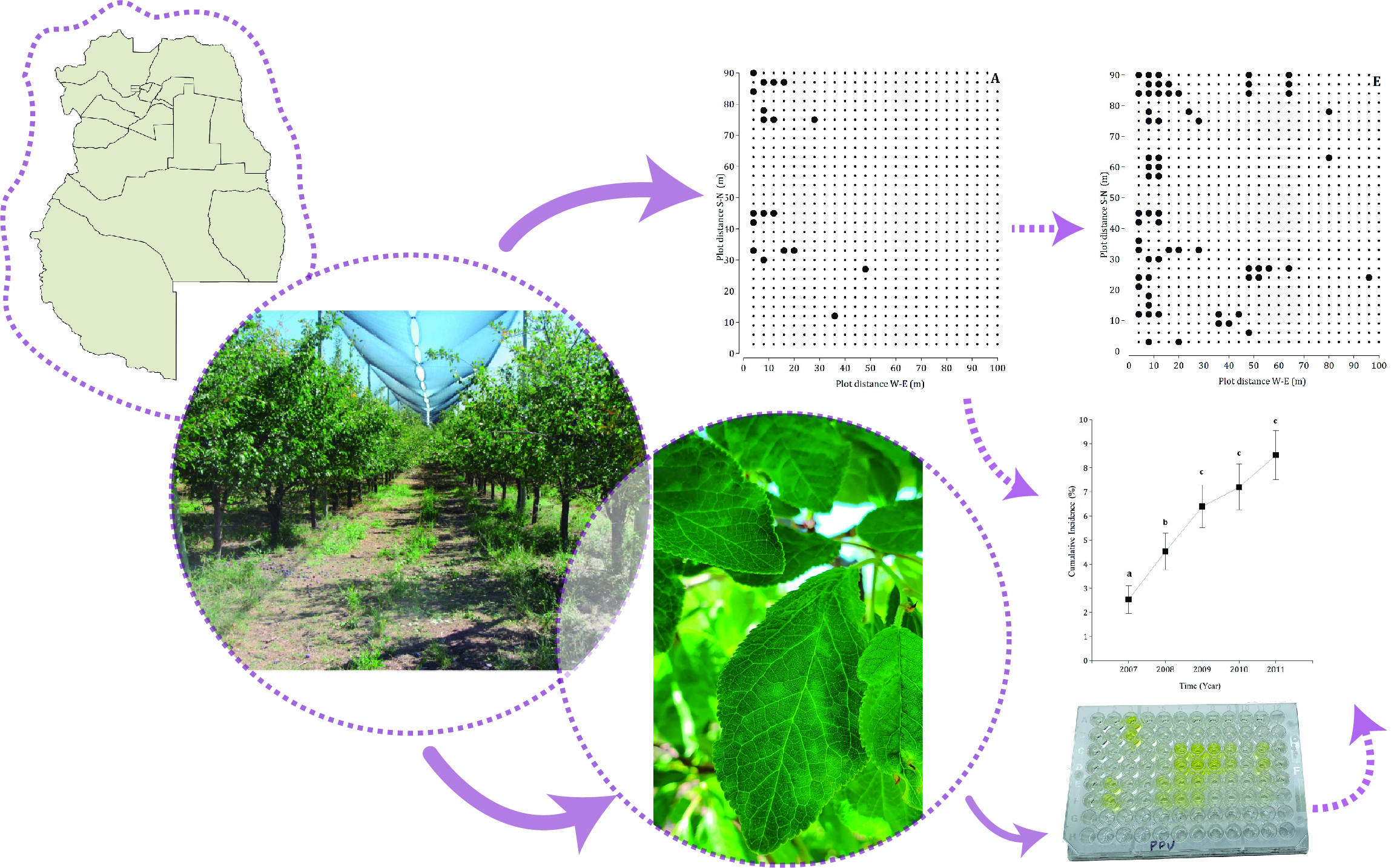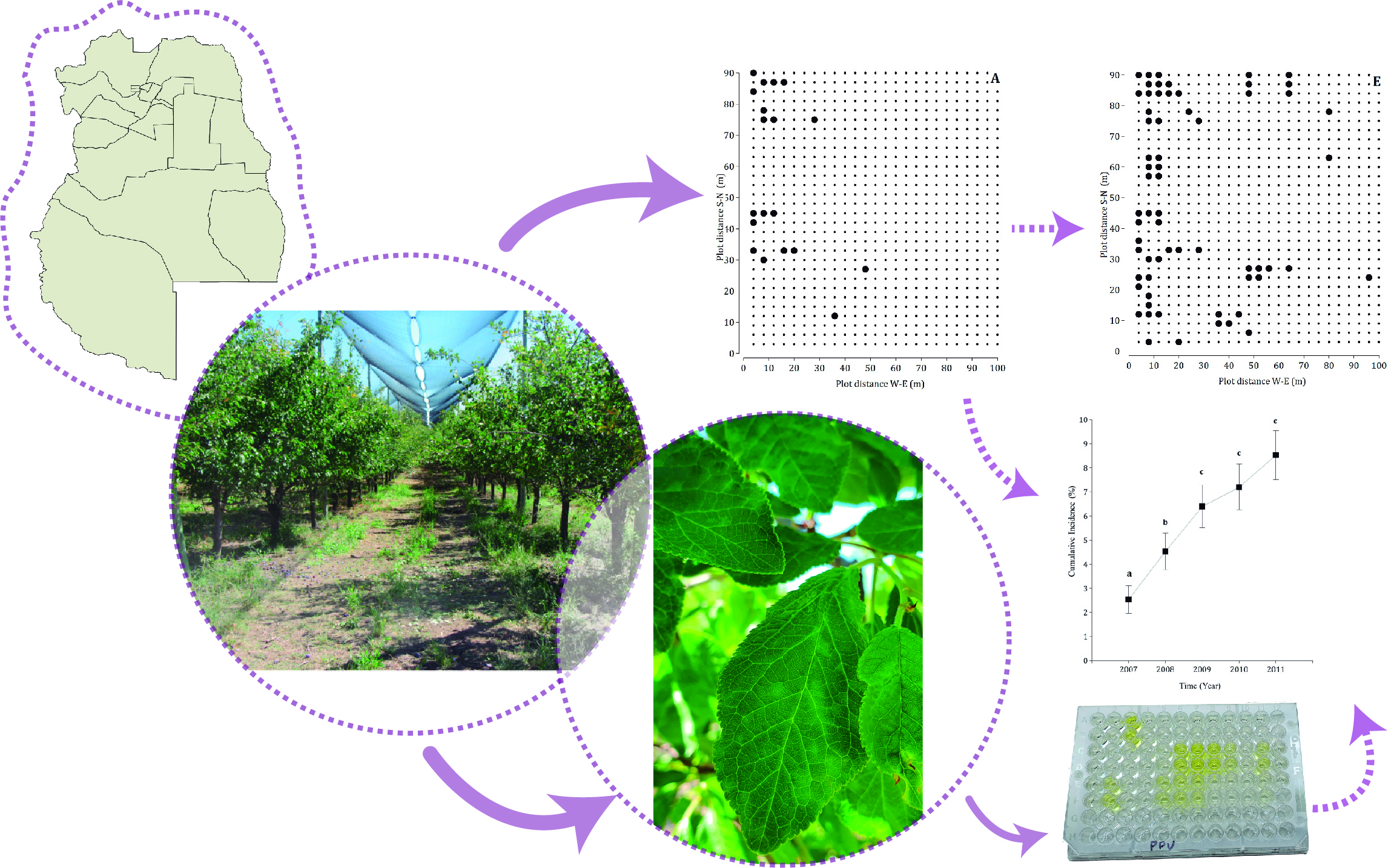Spatio and temporal spread of Plum pox virus infecting European plum (Prunus domestica L. cv. D'agen) orchard in Mendoza, Argentina
Keywords:
sharka, Prunus domestica cv. D'agen, temporal and spatial virus statistical analysis, PPVAbstract

Sharka, caused by Plum pox virus (PPV), is considered one of the most serious viral diseases of stone fruits worldwide due to the great yield losses in orchards. In Rama Caída, Mendoza, a 5-year study (2007-2011) was conducted in a European plum cv D’agen orchard using samples from leaves and DAS-ELISA assay against PPV in order to determine incidence over time and spatial spread. Incidence significantly increased between 2007 and 2009, while for the next two years the increase was not statistically significant. Spatial point pattern of PPV at the plot was characterized by the occurrence of some heterogeneous clusters of infected trees located up to 65 m in the west-east direction of the rows over the five years. Point pattern and correlation type-approaches were undertaken using joint-count and Ripley's K function and showed that the detected
infected plants had a disease aggregation pattern both in west-east and south-north directions, as well as within and between rows across the plot. This short-distance local dispersion would be associated with diverse factors, such as vector aphids, that were not evaluated in this study. Hence, this work can serve as a basis for further studies of sharka dispersion in Cuyo region.
Highlights
- Plum pox virus (PPV) positive trees were detected by DAS-ELISA showing an increasing number of diseased plants overtime in a European plum cv D’agen plot in Rama Caída, Mendoza, Argentina during five years.
- The incidence of overtime was higher at the beginning of the study instead of the following years, indicating that the PPV epidemic was at a very early stage.
- The spatial point pattern of PPV at the plot was characterized by some heterogeneous clusters of infected trees observed from initial focus (within the row) up to 65 m in the west-east direction of the rows.
- Heterogeneous aggregated spatial associations of PPV occurred close in space and time, which was confirmed by autocorrelation spatial analysis with Ripley's K function and Join-count.
- An aggregated point pattern of PPV had a positive correlation between the infected tree and the distance between each one showing a disease aggregation in both directions W-E and S-N, across the plot.

Published
Issue
Section
License
Aquellos autores/as que tengan publicaciones con esta revista, aceptan las Políticas Editoriales.


